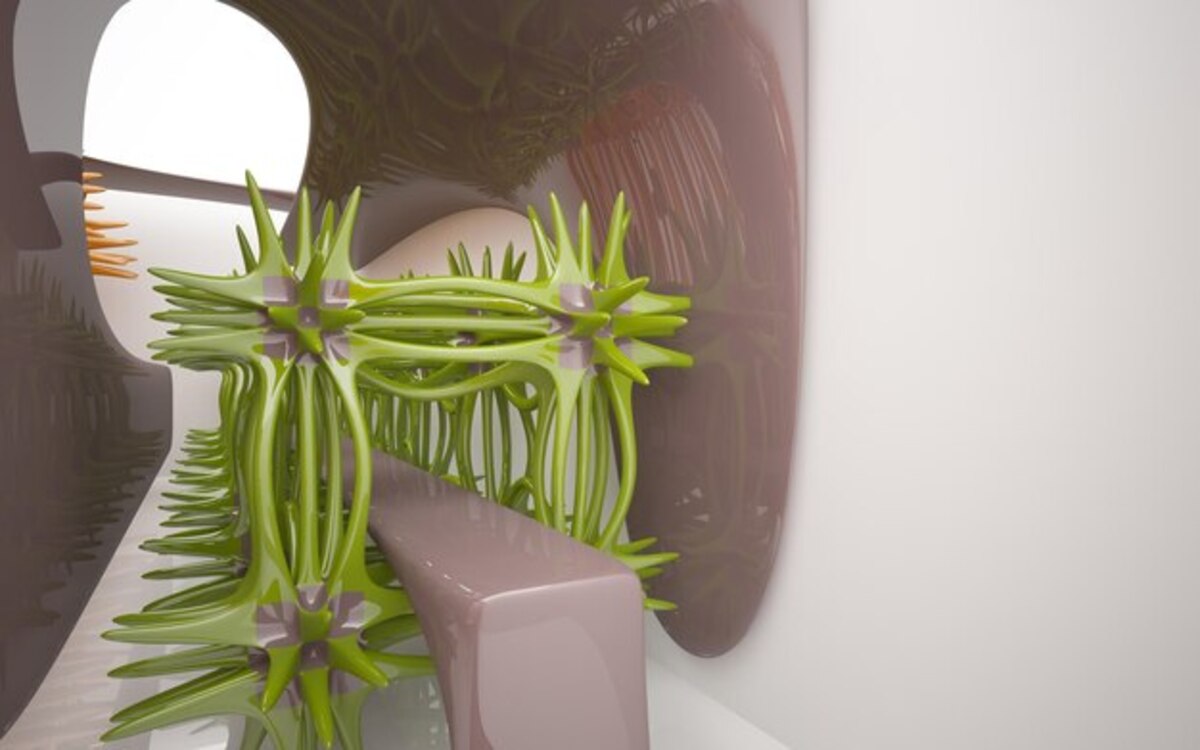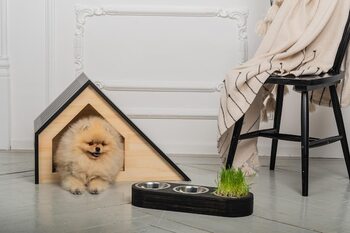Redefining urban home with a focus on emotional well-being

Redefining urban home not only involves a matter of design and aesthetics, but also a deep focus on the emotional well-being of its inhabitants. In a world where stress and disconnection are increasingly common, transforming our urban spaces into refuges that promote mental peace and personal connection becomes essential. Through this article, we will explore how small modifications can make a significant difference in our daily environment, thus creating a home that is not only a physical place but also an emotional sanctuary.
The importance of biophilic design in urban homes
Biophilic design emerges as an essential response to urban life, where concrete and asphalt tend to dominate the landscape. Incorporating natural elements into our homes not only enhances aesthetics but also promotes a significant state of emotional well-being. The presence of plants, natural light, and organic materials can reduce stress, increase productivity, and improve our mood. By integrating these components into our spaces, we are creating an environment that reminds us of our intrinsic connection to nature, which is vital for our psychological balance.
Moreover, biophilic design encourages the creation of spaces that invite calm and rest. In an urban home where distractions abound, having green corners or bright areas can serve as a personal refuge. Research has shown that environments that incorporate natural elements can reduce anxiety and improve our emotional resilience. Thus, by redesigning our homes with a focus on biophilic design, we not only transform our physical environment but also cultivate an atmosphere where our mental health and emotional well-being are prioritized.
Colors and textures: how they influence our mood
The colors and textures we choose for our home have a significant impact on our mood and emotional well-being. Warm tones, such as yellows and oranges, often generate feelings of happiness and energy, while blues and greens can induce calmness and serenity. By strategically combining these colors in different spaces, we can create environments that foster specific emotions; for example, a living room painted in soft shades of blue can become an ideal refuge for relaxation after a long day. Additionally, textures play a crucial role: a soft rug or plush cushions are not only pleasant to the touch but also invite moments of comfort and tranquility.
The conscious incorporation of tactile and chromatic elements not only transforms the space visually but also becomes a powerful tool for our emotional well-being. Rough surfaces can offer a sense of connection to nature, while smooth finishes provide modernity and order. In this sense, it is essential to experiment with different combinations to discover which resonate best with our personal emotions. At the end of the day, redesigning our urban homes with these principles in mind allows us to cultivate a more harmonious environment that not only reflects our personal aesthetic but also nurtures our mental and emotional health.
3. Multifunctional spaces: optimizing areas for well-being
Multifunctional spaces are an innovative response to the limitations of modern urban living, where every square meter counts. By integrating areas that serve multiple purposes, such as a work nook that transforms into a relaxation area at the end of the day, we not only maximize space usage but also encourage greater adaptability in our daily routines. This flexibility allows each inhabitant to find their zone of comfort and well-being, whether by creating a space for meditation or a small studio to cultivate creativity. The key lies in choosing furniture and decorative elements that adapt to different functions without sacrificing style or comfort.
Additionally, these multifunctional spaces can be designed to enhance social connection among household members. For example, a living room that also serves as a dining area or play space can facilitate more meaningful interactions and shared moments among family and friends. Incorporating elements like adjustable lighting, natural plants, and cozy textiles not only beautifies the environment but also improves the emotional state of those who inhabit it. By optimizing our common areas for collective and individual well-being, we transform our home into a true refuge where everyone can feel comfortable and connected.
4. The incorporation of natural elements: plants and natural light
The incorporation of natural elements in our urban homes is a powerful strategy to promote emotional well-being. Plants, for example, not only add an aesthetic and vibrant touch to any space but also have proven benefits for mental health. Studies have shown that the presence of greenery can reduce stress levels, improve mood, and increase productivity. By introducing various species of plants indoors, we not only enhance air quality but also create a more relaxing and inviting environment, ideal for disconnecting from the urban hustle.
Maximizing natural light is another fundamental aspect when redefining our home. Sunlight has a direct impact on our physical and emotional health; it promotes the production of serotonin, known as the happiness hormone. Well-lit spaces can make us feel more energized and motivated. Incorporating large windows or strategically placed mirrors can help reflect that light and visually enlarge spaces, creating a more cheerful and lively environment. Together, plants and natural light form a perfect synergy that transforms our urban homes into true havens where emotional well-being flourishes.
5. How acoustics impact our emotional health at home
The acoustics of our home have a significant impact on our emotional health, influencing not only our mood but also our ability to relax and concentrate. The noises of the urban environment, such as traffic or construction, can generate elevated levels of stress and anxiety, disrupting the tranquility we seek in our personal spaces. By paying attention to acoustics, we can create more harmonious environments through the use of sound-absorbing materials, such as carpets, heavy curtains, and acoustic panels. These modifications not only help reduce external noise pollution but also promote a calmer atmosphere conducive to emotional well-being.
In addition to the physical elements that can enhance home acoustics, it is crucial to consider how we organize spaces and what activities we engage in within them. Creating specific areas for meditation, reading, or simply resting can help reduce mental noise and promote a sense of calm. Likewise, incorporating natural sounds—such as the flowing water from an indoor fountain or soft melodies—can elevate our emotional state by inducing feelings of peace and connection with nature. In this sense, redefining our urban homes involves not just seeking a visually welcoming space, but also one that resonates with our emotions and provides a sound refuge where we can recover from the fast pace of the outside world.
6. Digital disconnection zones: creating spaces for calm
The creation of digital disconnection zones in our urban homes has become crucial in an environment where technology is omnipresent. These spaces, free of electronic devices and digital distractions, allow individuals to immerse themselves in the present and enjoy moments of calm. Imagine a cozy corner with comfortable pillows, a bookshelf full of books, or a window that offers views of nature; such environments invite reflection and rest. By setting clear boundaries regarding the use of mobile phones and other devices, we foster a family culture where interpersonal connection and self-care are valued.
Additionally, digital disconnection zones should be designed to stimulate the senses. Incorporating natural elements such as plants, water, or soft textures can significantly enhance the ambiance. Soft lighting also plays a fundamental role; opting for warm lights or lamps that mimic natural light helps create a relaxing space that invites meditation or simply enjoying silence. Ultimately, these areas not only provide a temporary refuge from urban noise but are also essential for cultivating emotional well-being and strengthening interpersonal relationships within the home.
7. The influence of art and creativity in the urban home
The influence of art and creativity in the urban home is essential for cultivating an environment that fosters emotional well-being. Incorporating artworks, whether paintings, sculptures, or photographs, can transform monotonous spaces into vibrant places that reflect the personality and emotions of their inhabitants. By choosing pieces that resonate with our experiences or aspirations, we can create a visual dialogue that inspires calm and motivation. Furthermore, art not only serves as a decorative element; it also becomes a catalyst for reflection and connection with oneself, which is crucial in urban environments where distractions are constant.
Creativity also plays a crucial role when designing our urban home. Spaces dedicated to creative activities such as painting, writing, or even gardening can provide a therapeutic outlet against everyday stress. A cozy corner equipped with artistic materials allows residents to explore their imagination and express their emotions in a tangible way. This not only promotes a sense of personal achievement but can also serve as a meeting point to share meaningful moments with friends and family. Ultimately, fostering creativity and appreciation for art in our homes contributes to creating emotional havens that nourish our mental health and connect our lives with what we truly value.
8. Community and connection: rediscovering the sense of belonging
Community and connection are fundamental elements to rediscovering a sense of belonging in an urban environment that can often feel impersonal. Fostering close relationships with our neighbors and creating spaces that facilitate social interaction is a powerful way to enrich our emotional well-being. Initiatives like community gardens, shared recreational areas, or local events not only promote coexistence but also allow people to feel part of something larger. When we actively engage in our community, we cultivate a sense of identity and mutual support that can transform our everyday experience.
Additionally, emotional connection begins with small gestures. A friendly greeting to the neighbor, a casual conversation in the elevator, or sharing a cup of coffee may seem insignificant, but these interactions are vital for building strong social networks. Urban communities can become true havens if everyone contributes their part to foster a welcoming and collaborative environment. By prioritizing these human bonds, we not only improve our quality of life individually but also help create a collective home where everyone feels valued and supported. In this sense, redefining urban home implies recognizing that our connections with others are as important as the physical space we inhabit.



